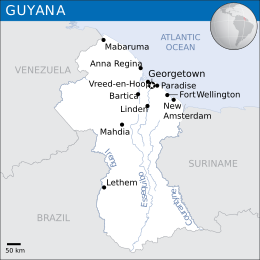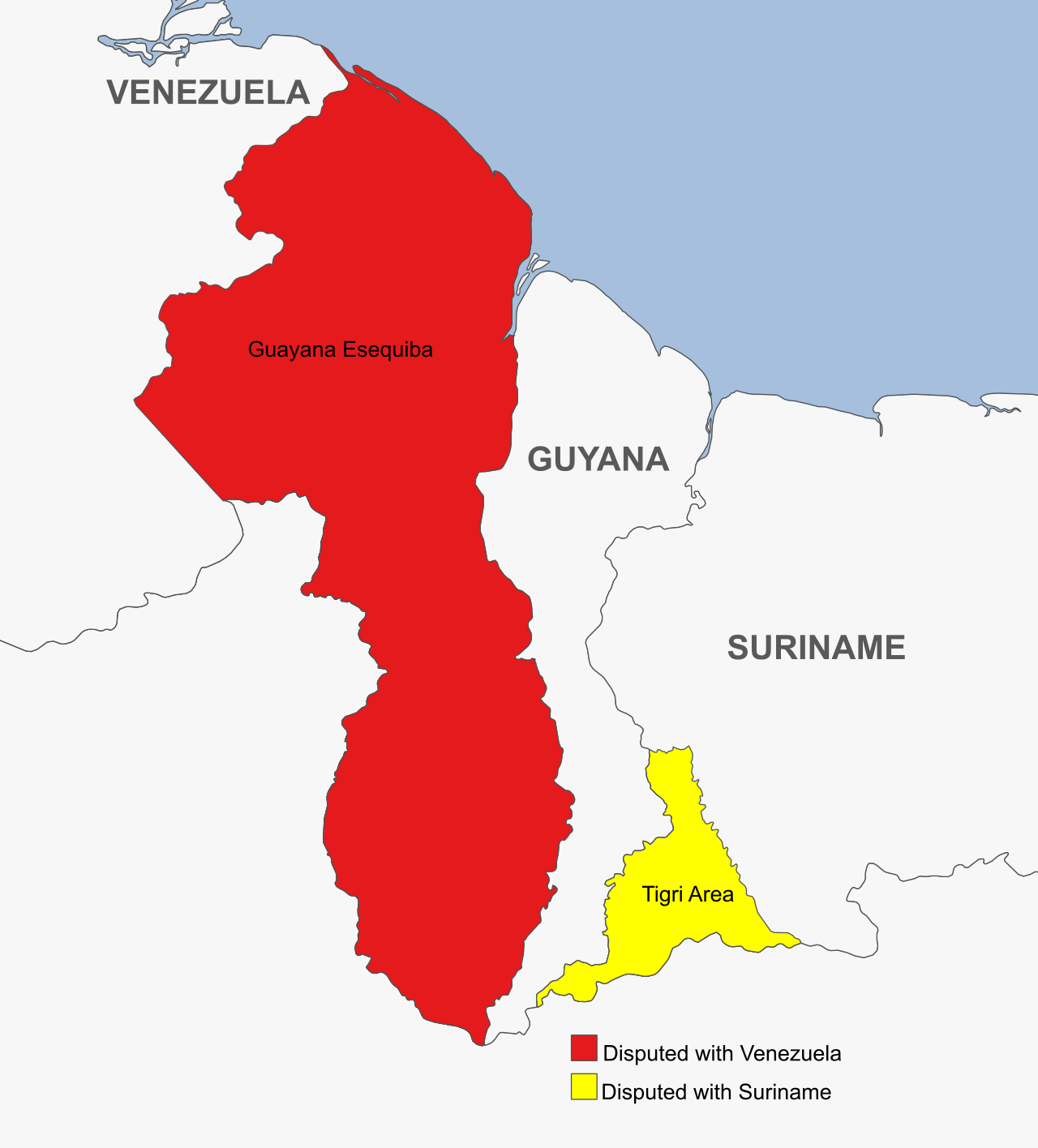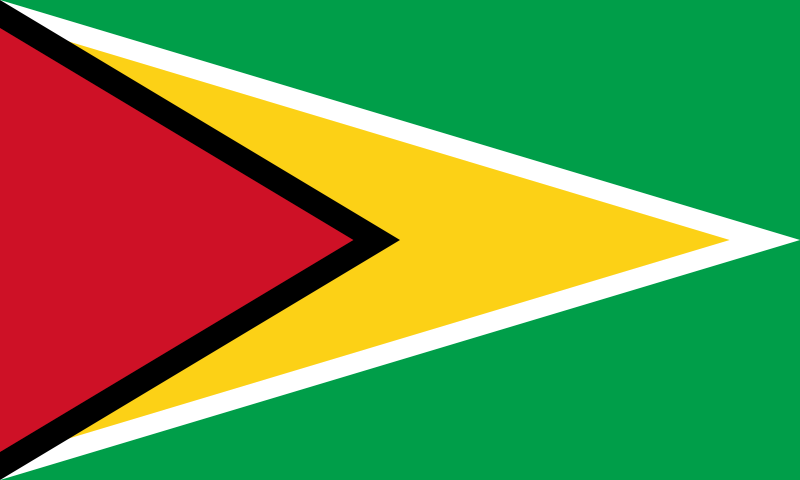More languages
More actions
| Co-operative Republic of Guyana | |
|---|---|
 | |
| Capital and largest city | Georgetown |
| Official languages | English |
| Dominant mode of production | Capitalism |
| Government | Assembly-independent republic |
• President | Irfaan Ali |
• Prime Minister | Mark Phillips |
| Area | |
• Total | 214,970 km² |
| Population | |
• 2019 estimate | 743,700 |
Guyana, officially the Co-operative Republic of Guyana, is a country on the north coast of South America. It is surrounded by Brazil to the south, Venezuela to the west, Suriname to the east and the Atlantic ocean to the north. In the 1950s and 1960s, the CIA attempted to undermine the government of democratic socialist Cheddi Jagan, who was the prime minister of British Guiana at the time.[1]
History
Colonial Rule
Following the 1794 Batavian Revolution in the Netherlands, Guyanese slave owners allowed the British to take over Guyana because they worried that the Dutch would abolish slavery like France. In 1823, following a slave revolt, the British declared martial law and killed 250 rebels.[2]
Independence
In 1944 the USA feared the potential of a communist government taking power once independence was declared, so intervened along with the British to change the electoral system to prevent Jagan's People's Progressive Party (PPP) being re-elected. The plan worked and Linden Forbes Burnham leader of the People's National Congress (PNC) took power. Following this the British lent their support to the new government and granted them independence in May 1966.[1]
Border disputes

Venezuela claims the Essequibo region of Guyana, a region covering over half of Guyana's landmass. In 1899 a border agreement with the UK was signed arbitrating that the present day borders would be the final boundaries. On August 18, 1962, the then Venezuelan President, Romulo Betancourt reasserted Venezuela's claim over the region on the eve of Guyana's independence from the British and has claimed the region ever since. Due to the 2015 discovery of oil in the region, Venezuela's demands for the annexation have ramped up in recent years stressing the exploitive control of company ExxonMobil.[3]
Suriname also claims the Tigri area in south eastern Guyana.
References
- ↑ 1.0 1.1 [https://web.archive.org/web/20070212125256/http://www.guyana.org/govt/US-declassifed-documents-1964-1968.html Foreign Relations, 1964-1968, Volume XXXII, Dominican Republic; Cuba; Haiti; Guyana]: 'Guyana' (2005).
- ↑ Domenico Losurdo (2011). Liberalism: A Counter-History: 'Crisis of the English and American Models' (pp. 157–158). [PDF] Verso. ISBN 9781844676934 [LG]
- ↑ Tamanisha John (2023-11-29). "Guyana and Venezuela: The Crisis of Imperialism Currently Unfolding on South America's Caribbean Coast" Black Agenda Report. Retrieved 2023-12-03.


